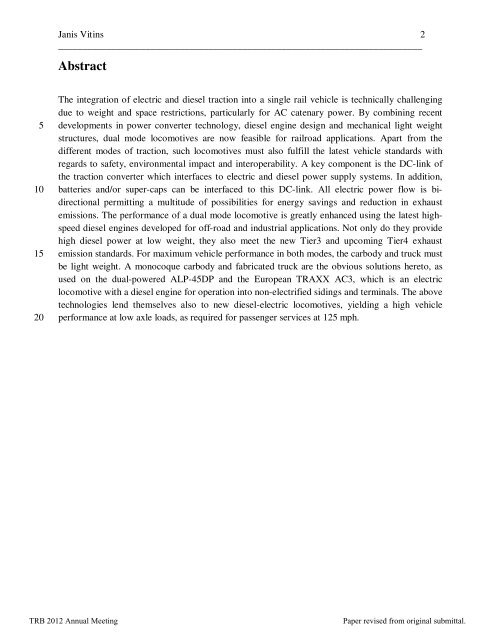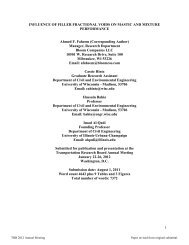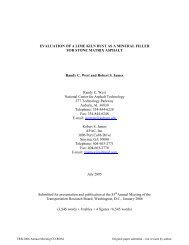DUAL MODE AND NEW DIESEL LOCOMOTIVE DEVELOPMENTS
DUAL MODE AND NEW DIESEL LOCOMOTIVE DEVELOPMENTS
DUAL MODE AND NEW DIESEL LOCOMOTIVE DEVELOPMENTS
You also want an ePaper? Increase the reach of your titles
YUMPU automatically turns print PDFs into web optimized ePapers that Google loves.
5<br />
10<br />
15<br />
20<br />
Janis Vitins 2<br />
___________________________________________________________________________<br />
Abstract<br />
The integration of electric and diesel traction into a single rail vehicle is technically challenging<br />
due to weight and space restrictions, particularly for AC catenary power. By combining recent<br />
developments in power converter technology, diesel engine design and mechanical light weight<br />
structures, dual mode locomotives are now feasible for railroad applications. Apart from the<br />
different modes of traction, such locomotives must also fulfill the latest vehicle standards with<br />
regards to safety, environmental impact and interoperability. A key component is the DC-link of<br />
the traction converter which interfaces to electric and diesel power supply systems. In addition,<br />
batteries and/or super-caps can be interfaced to this DC-link. All electric power flow is bidirectional<br />
permitting a multitude of possibilities for energy savings and reduction in exhaust<br />
emissions. The performance of a dual mode locomotive is greatly enhanced using the latest highspeed<br />
diesel engines developed for off-road and industrial applications. Not only do they provide<br />
high diesel power at low weight, they also meet the new Tier3 and upcoming Tier4 exhaust<br />
emission standards. For maximum vehicle performance in both modes, the carbody and truck must<br />
be light weight. A monocoque carbody and fabricated truck are the obvious solutions hereto, as<br />
used on the dual-powered ALP-45DP and the European TRAXX AC3, which is an electric<br />
locomotive with a diesel engine for operation into non-electrified sidings and terminals. The above<br />
technologies lend themselves also to new diesel-electric locomotives, yielding a high vehicle<br />
performance at low axle loads, as required for passenger services at 125 mph.<br />
TRB 2012 Annual Meeting Paper revised from original submittal.




